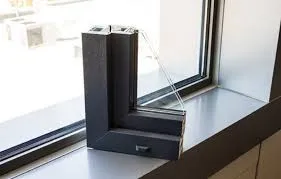cast iron components
The Importance of Cast Iron Components in Modern Engineering
Cast iron has been a fundamental material in engineering and manufacturing since ancient times, owing to its remarkable properties and versatility. It has evolved significantly over the years and continues to play a vital role in various industries, from automotive to construction. This article delves into the significance of cast iron components, examining their properties, applications, and advantages in modern engineering.
Properties of Cast Iron
Cast iron is an iron-carbon alloy with a carbon content typically between 2% and 4%. This unique composition gives cast iron several distinct properties that make it suitable for a wide range of applications. One of its most notable characteristics is its excellent machinability and castability, allowing it to be easily shaped into complex forms without compromising structural integrity. Additionally, cast iron exhibits remarkable wear resistance and durability, making it ideal for components subject to high stress and friction.
Another key property of cast iron is its ability to dampen vibrations. This quality has made it a preferred material for manufacturing machine bases, which require stability and precision. Furthermore, cast iron has good thermal conductivity, making it an excellent choice for engine blocks and cookware, where heat distribution is critical.
Applications of Cast Iron Components
The applications of cast iron are vast and varied, spanning numerous industries. In the automotive sector, cast iron is commonly used for engine blocks, cylinder heads, and exhaust manifolds. Its durability and ability to withstand high temperatures make it an ideal candidate for components that are subjected to extreme conditions. Lightweight alternatives like aluminum are sometimes favored for performance purposes, but cast iron remains a popular choice due to its cost-effectiveness and reliability.
In the construction industry, cast iron is widely employed in the production of pipes, fittings, and structural components. Its resistance to corrosion and wear makes it suitable for water and sewage systems, ensuring longevity and minimal maintenance. Additionally, cast iron is often used in architectural applications, such as railings, columns, and decorative elements, where both strength and aesthetic appeal are desired.
cast iron components

The manufacturing of household items is another crucial application area for cast iron. From skillets and Dutch ovens to outdoor grills, cast iron cookware is cherished for its ability to retain heat and deliver even cooking results. Many chefs prefer cast iron for its exceptional heat retention and natural non-stick properties when properly seasoned.
Advantages of Cast Iron Components
The advantages of cast iron components extend beyond their mechanical properties. One primary benefit is cost-effectiveness. Cast iron is relatively inexpensive compared to other materials, such as aluminum or steel, allowing manufacturers to produce high-quality components at a lower cost. This affordability contributes to its widespread usage in various applications.
Another significant advantage is the material's recyclability. Cast iron can be repeatedly melted down and reformed without a loss in quality, making it an environmentally friendly choice for sustainable manufacturing practices. This characteristic aligns with the growing emphasis on sustainability and reducing waste in today's industrial landscape.
Moreover, the aesthetic appeal of cast iron cannot be overlooked. Its distinctive finish and texture can add a rustic charm to products, making it a popular choice in both functional and decorative applications. Cast iron art, such as sculptures and garden decor, also exemplifies the material's versatility beyond industrial use.
Conclusion
In conclusion, cast iron components continue to be essential in modern engineering due to their unique properties, diverse applications, and numerous advantages. From automotive parts to architectural elements and household cookware, the versatility of cast iron ensures its relevance in various industries. As technology advances and the demand for sustainable practices grows, the significance of cast iron in manufacturing will likely remain steadfast. The continued innovation in casting techniques and material science will further enhance the capabilities of cast iron, cementing its place as a cornerstone of engineering for years to come.
-
Wrought Iron Components: Timeless Elegance and Structural StrengthNewsJul.28,2025
-
Window Hardware Essentials: Rollers, Handles, and Locking SolutionsNewsJul.28,2025
-
Small Agricultural Processing Machines: Corn Threshers, Cassava Chippers, Grain Peelers & Chaff CuttersNewsJul.28,2025
-
Sliding Rollers: Smooth, Silent, and Built to LastNewsJul.28,2025
-
Cast Iron Stoves: Timeless Heating with Modern EfficiencyNewsJul.28,2025
-
Cast Iron Pipe and Fitting: Durable, Fire-Resistant Solutions for Plumbing and DrainageNewsJul.28,2025
-
 Wrought Iron Components: Timeless Elegance and Structural StrengthJul-28-2025Wrought Iron Components: Timeless Elegance and Structural Strength
Wrought Iron Components: Timeless Elegance and Structural StrengthJul-28-2025Wrought Iron Components: Timeless Elegance and Structural Strength -
 Window Hardware Essentials: Rollers, Handles, and Locking SolutionsJul-28-2025Window Hardware Essentials: Rollers, Handles, and Locking Solutions
Window Hardware Essentials: Rollers, Handles, and Locking SolutionsJul-28-2025Window Hardware Essentials: Rollers, Handles, and Locking Solutions -
 Small Agricultural Processing Machines: Corn Threshers, Cassava Chippers, Grain Peelers & Chaff CuttersJul-28-2025Small Agricultural Processing Machines: Corn Threshers, Cassava Chippers, Grain Peelers & Chaff Cutters
Small Agricultural Processing Machines: Corn Threshers, Cassava Chippers, Grain Peelers & Chaff CuttersJul-28-2025Small Agricultural Processing Machines: Corn Threshers, Cassava Chippers, Grain Peelers & Chaff Cutters












